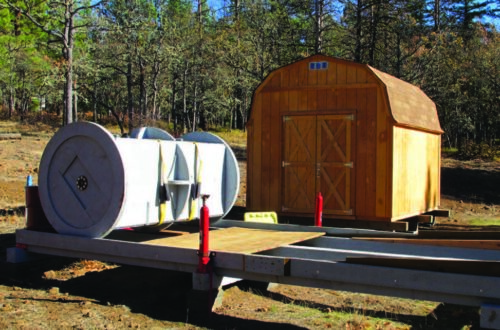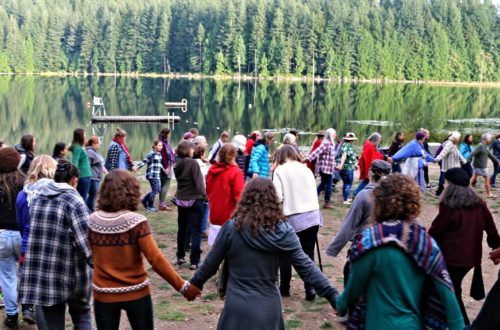It’s one of nature’s most perfect contradictions: a substance that is ubiquitous but unseen; humble but essential; surprisingly strong but profoundly fragile. It nurtures life and death; undergirds cities, forests, and oceans; and feeds all terrestrial life on Earth. It is a substance few people understand and most take for granted. Yet, it is arguably one of Earth’s most critical natural resources – and humans, quite literally, owe to it their very existence.
From the food we eat to the clothes we wear to the air we breathe, humanity depends upon the dirt beneath our feet. Gardeners understand this intuitively; to them, the saying “cherish the soil” is gospel. But for the better part of society, dirt barely gets a sideways glance. To most, it’s just part of the background, something so obvious it’s ignored.
Even among the environmentally minded, soil sags well below the radar of important causes. But the relationship between soil quality and other aspects of environmental health is intricately entwined. What’s more, it’s a relationship that encompasses a vast swath of territory, from agricultural practices to global climate change, and from the well-being of oceans to that of people.
Despite humankind’s long relationship with soil, the stuff remains a mystery. Even our language manages to maligns it. Somehow, “dirt” has acquired a bad reputation. And it’s been codified in some of our most common idioms, with people described as “dirty rotten scoundrels,” “poor as dirt” or “dirtbags.” The modern word “dirt” itself descends from the less than complimentary Old English word “drit,” meaning “excrement.” Instead of marveling at the mystery of soil, we have mocked it, by dredging and paving; desiccating and polluting, and working it to exhaustion.
Now our poor husbandry of this essential resource is catching up with us, in the form of disconcertingly rapid erosion and loss of farmland, widespread agricultural pollution, damage to fisheries, and alarming levels of pesticides and other chemicals building up in our bodies. The subject of soil is rarely billed as glamorous or sexy, but it should be. From its remarkable properties to its critical ecological importance, the dirt under our feet is a goldmine of scientific wonderment, and it’s about time people got excited about soil.
Soil is Special Stuff – Soil types vary considerably on our planet, from the hottest deserts to the coldest poles. Soil, directly and indirectly, affects agricultural productivity, water quality, and climate. Thanks to the Earth’s soils, most of the rainfall hitting our planet is trapped and absorbed, watering plants and replenishing aquifers, rivers, lakes, and streams. If soil didn’t catch and apportion this water, it would run off the land into the oceans, and the continents would be barren wastelands.
If it weren’t for the stabilizing effect of soil, ancestral plants could never have survived the fierce, raw weather of primordial Earth. Over millions of years, these plants and their offspring created the life-sustaining atmosphere required for land animals to evolve. Essentially an organ of Mother Earth, the soil is a vital living system – the very skin of our planet – that nourishes the plants we eat, the animals we use for food and fiber, and the thriving underground kingdom of bacteria, fungi, protozoa, earthworms and other microbes that are critical to the planet’s food webs. To put it another way, without soil humans would be creatures of the sea. Only about 20 percent of the Earth’s surface is covered by land. However, much of this land is too inhospitable to support our species. Only about eight percent of the planet’s soil surface is actually arable. This means, explains Wes Jackson of the Land Institute, that all six billion people living today have but a tiny fraction of soil to thank for their survival and diverse ways of life.
Anatomy of Healthy Soil – So what is healthy soil? Deceptively simple to the naked eye, healthy soils are dynamic ecosystems made up of a mixture of minerals, air, water, organic materials, and a healthy population of microorganisms. The range and concentration of minerals present depends on the parent bedrock. Healthy soil is also extremely porous: Air accounts for about half its volume, providing channels for water to flow, pathways for roots, and space for organisms to move around. Compaction, primarily the result of heavy farm machinery and livestock, squeezes air out of the soil, depleting available oxygen.
When soil is healthy, however, it is a hotbed of thriving biological activity. We can’t see most of that ongoing work, save perhaps on particularly rainy days when earthworms flock to the surface or a large insect scuttles across the ground. But a single gram of fertile soil can contain several million microbes. One heaping tablespoon of healthy soil may contain up to nine billion microorganisms, which is more than the human population on Earth, points out Harvey Blatt, author of the 2004 book America’s Environmental Report Card. An acre of healthy topsoil can contain 900 pounds of earthworms, 2,400 pounds of fungi, 1,500 pounds of bacteria, 133 pounds of protozoa, 890 pounds of arthropods and algae, and in some cases, even small mammals. When this diverse soil community is disrupted or damaged, the consequences may be dire.
Plants are the first to suffer from damage to the soil community. Interestingly, soil microbes play a critical role in plant health. Long ago in Earth’s evolutionary history, early soil microbes forged one of the first symbiotic relationships with early land plants when some algae and bacteria developed the ability to “fix” nitrogen, a nutrient essential for plant growth. Nitrogen is plentiful in the atmosphere, but plants can’t use it in that pure form. They can only use nitrogen that’s been incorporated into compounds like ammonia or nitrate. Once nitrogen-fixing organisms evolved billions of years ago, pioneer plants were able to creep onto the land. As these early plants gained a foothold on the rocky ledges poking out of the primordial seas, they helped build the terrestrial soils.
Today, the symbiosis between soil organisms and plants is deeply intertwined. Many soil microbes feed on by-products from growing roots and, in turn, help plants by extracting minerals and vitamins from the soil. Like microscopic farmers plowing and tilling their subterranean plots, these organisms enhance soil structure and help control plant-preying pests, cultivating an underground ecosystem. Construction and urbanization pose significant challenges to soil health. A single rainstorm can wash away centuries- worth of dirt.
These “chthonic” (pronounced “thonic” and meaning “of the Earth”) creatures also provide another overlooked but critical function: They are perhaps the world’s most prolific recyclers. Without the help of soil microbes to break down decaying plant and animal matter, fertile soils would not exist. Dead animals would never decompose, and the litter of leaves dropped from trees every autumn would soon bury buildings and roads.
This article appeared in the Summer 2018 Green Living Journal. A more comprehensive version of this story appears in The New Village Green (New Society Publishers, 2007)
Reprinted with permission from E Magazine. Their weekly Q&A column, Earth Talk, can be found at www.emagazine.com






